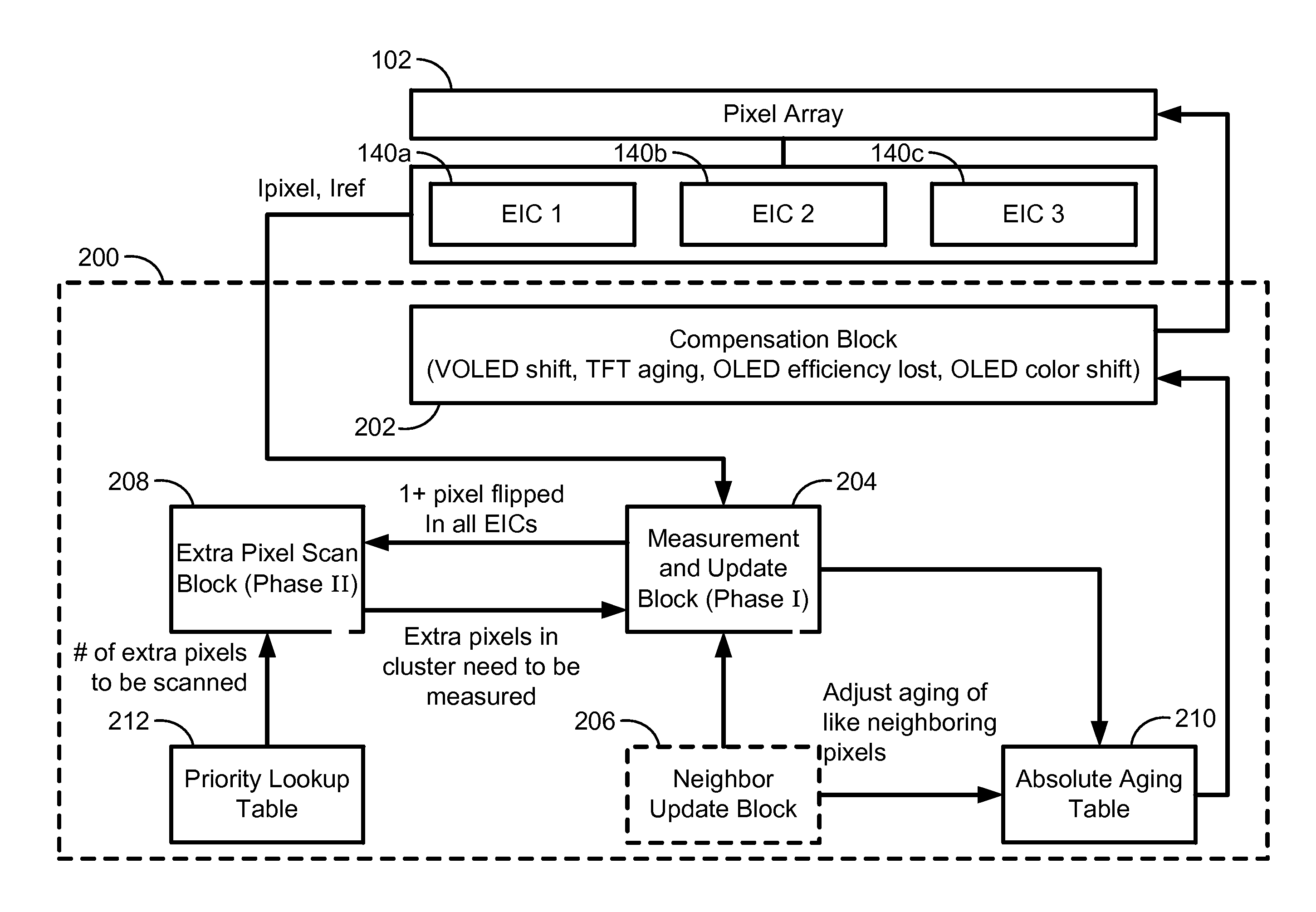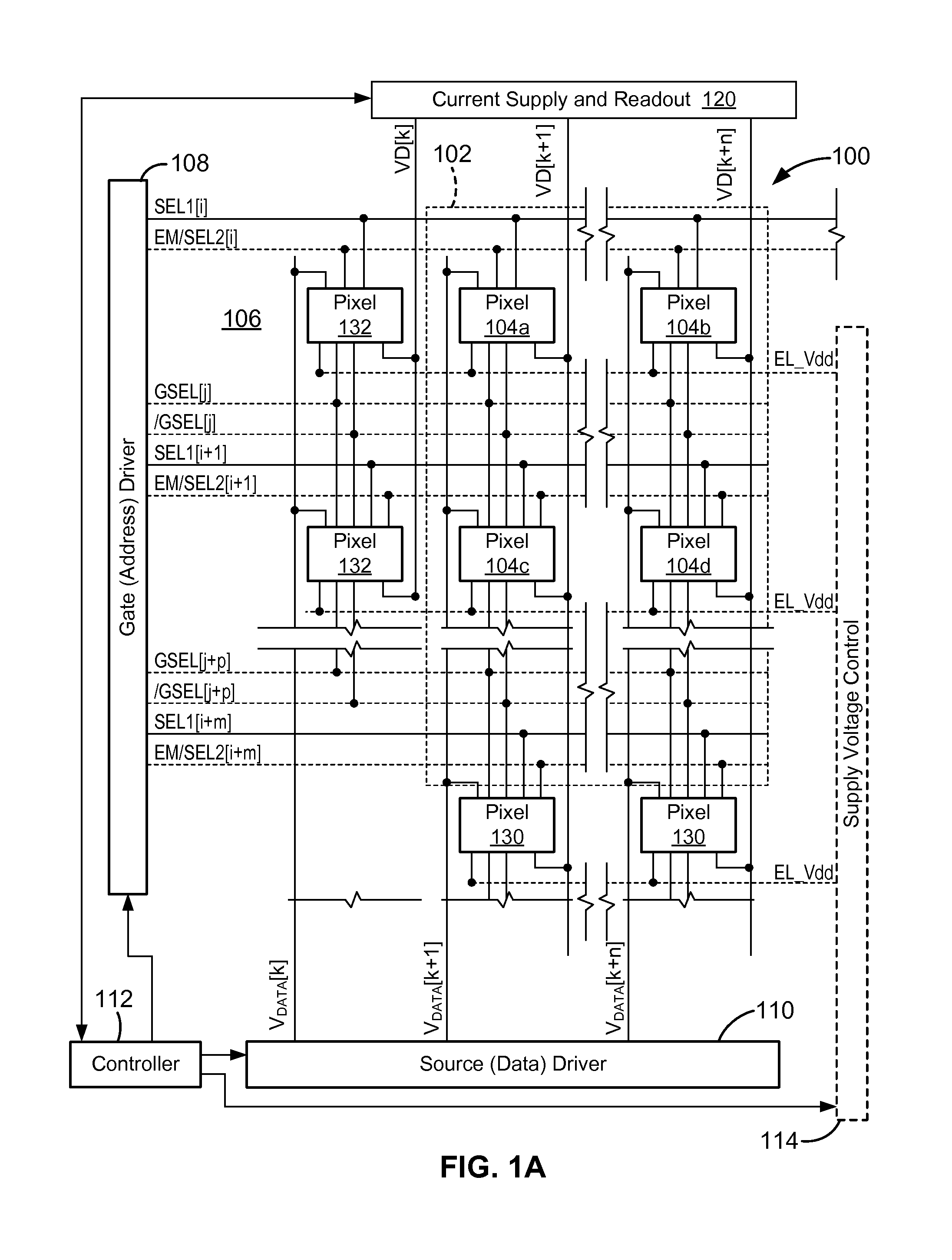Adaptive Feedback System For Compensating For Aging Pixel Areas With Enhanced Estimation Speed
a feedback system and pixel area technology, applied in the direction of cathode-ray tube indicators, instruments, electric digital data processing, etc., can solve the problems of unacceptably excessive time and long process of full-panel scan, and achieve the effect of increasing process efficiency
- Summary
- Abstract
- Description
- Claims
- Application Information
AI Technical Summary
Benefits of technology
Problems solved by technology
Method used
Image
Examples
Embodiment Construction
[0040]It should be noted that the present disclosure is directed to identifying areas of a pixel array for compensation for changes in a characteristic of the pixels, such as caused by a phenomenon such as aging or relaxation, temperature change, or process non-uniformities. Changes in the characteristic due to the adverse phenomenon can be measured by an appropriate measurement circuit or algorithm and tracked by any reference value, such as reference values indicating that a pixel (specifically, a drive transistor of the pixel) is aging or relaxing, or reference values indicative of the brightness performance or color shift of the pixel or a current deviation from an expected drive current value required to achieve a desired brightness. How those areas of pixels, once identified, are compensated (such as for aging or relaxation) is not the focus of the present disclosure. Exemplary disclosures for compensating for aging or relaxation of the pixels in a display are known. Examples ...
PUM
 Login to View More
Login to View More Abstract
Description
Claims
Application Information
 Login to View More
Login to View More - R&D
- Intellectual Property
- Life Sciences
- Materials
- Tech Scout
- Unparalleled Data Quality
- Higher Quality Content
- 60% Fewer Hallucinations
Browse by: Latest US Patents, China's latest patents, Technical Efficacy Thesaurus, Application Domain, Technology Topic, Popular Technical Reports.
© 2025 PatSnap. All rights reserved.Legal|Privacy policy|Modern Slavery Act Transparency Statement|Sitemap|About US| Contact US: help@patsnap.com



